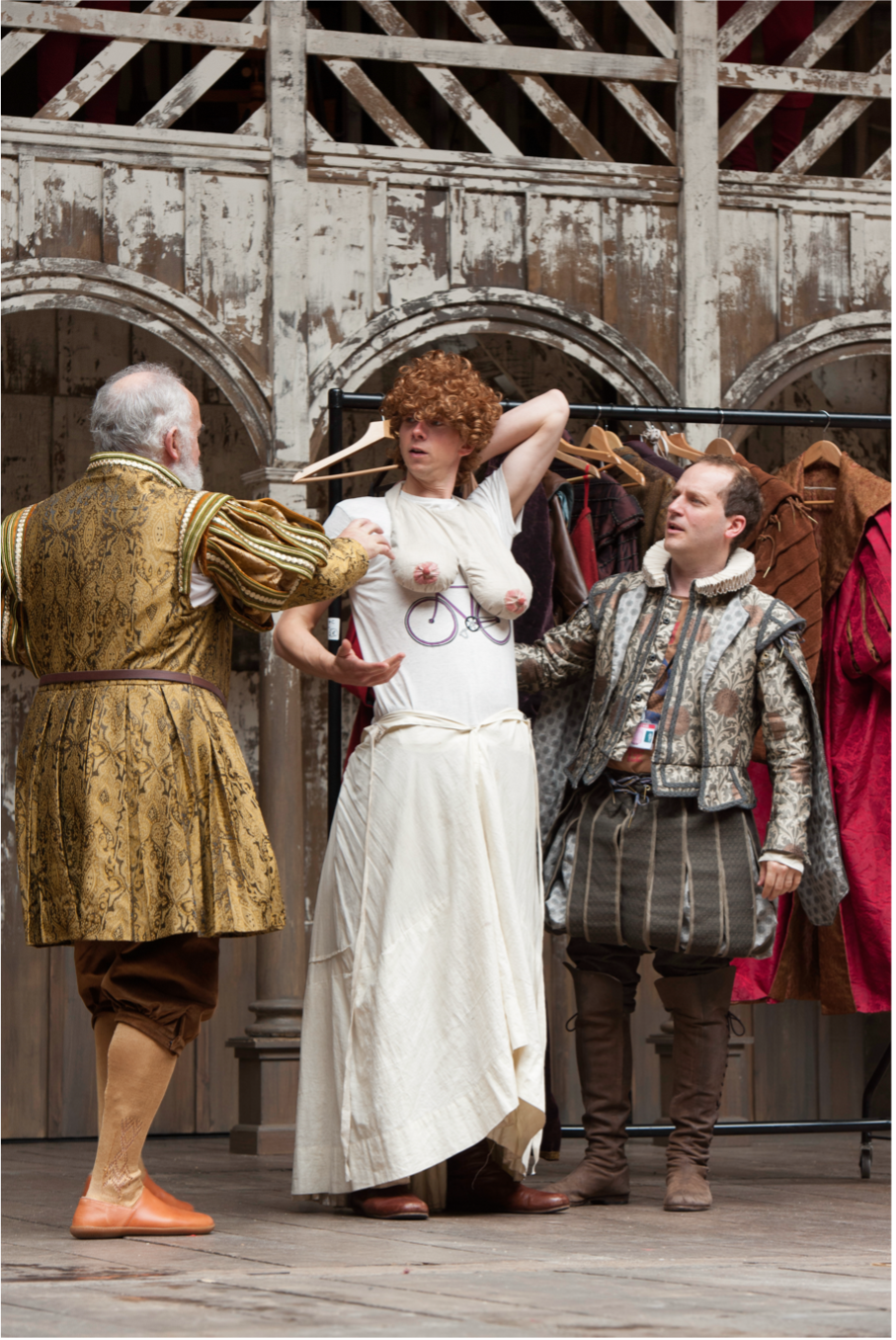Prosthesis
Prosthesis can be discussed in a myriad of situations to do with early modern drama, including Disability studies, economic assessments of the theatre’s burgeoning commerciality, Queer and Gender theory, and much more. Beyond their use onstage, moreover, prosthetic limbs in the early modern period were the subject of increasing scientific investigation and whole books — such as Ambroise Paré’s La Methode (1564) — were dedicated to them. It can be difficult for us in the present to appreciate the newness of seeing bodies presented in untrue forms; used, as we are, to transformative makeup effects, CGI, shape-shifting sets, green screens, and etc. Yet Richard III’s crookback, Falstaff’s great belly, the Duchess of Malfi’s closet pregnancy are all consequences of a prosthetic body that took hold of the imagination of early modern audiences and continues to do so today.
La methode curative des playes, et fractures de la teste humaine. : Avec les pourtraits des instruments necessaires pour la curation d'icelles. / Par M. Ambroise Paré (Paris, 1561).
Credit: Wellcome Collection. CC BY 4.0.
Prosthesis compliments the transformative power of the theatre, whether that be through changes to physicality, colour, or shape. On the early modern stage, for instance, prosthetic technologies could be used by all-male casts to signify gender, and they helped to convey other people, worlds, and places, just as they still do today. Acting as an enhancement of the body (and, indeed, of the language of the text), prosthetic devices turned the actor’s body into variable characters from across the world — from Cleopatra’s to Queens of Carthage. In texts such as Ben Jonson’s The Devil is an Ass (1616), there is evidence of the need for some type of prosthetic breast (possibly a leather padded piece) to be worn under clothing to facilitate a later reveal. This addition provides further allusions to classical stories and characters in popular revivals, such as Oresteia. Clothes, then, can also be included in the idea of the early modern performative prosthesis. They, too, transformed the look of the body that lay beneath — a technology if you will.
The Taming of the Shrew. Shakespeare’s Globe. Photo Credit: Manuel Harlan, 2012.
As work already begun by edited collections such as Porter, Walter, and Healy’s Prosthesis in Medieval and Early Modern Culture (2018) has shown, the term prosthesis has many facets and is yet to be fully defined or explored in historical study. This is especially so in connection with the early modern theatre and the significance of the stage in representing race, shape, body, and disability. The term prosthesis is, itself, found in the period and is in use from the 1550s. However, it applied to rhetorical additions — as found in Thomas Wilson’s Arte of Rhetorike (1553) — and would have been understood as a stylistic, rhetorical device rather than as a material effect for the stage. The idea of prosthesis as a material addition is a fairly new sense of the term, and is, in turn, a fairly new frame for exploring the on-stage changing of the actor’s body. Past scholarship has, on occasion, considered such an approach to be anachronistic. It is vital, then, to acknowledge the value of prosthesis as a historically-grounded study form, and to recognise its role both on and beyond the early modern stage.
The nature of prosthesis — to enhance, add, or replace — as an aesthetic practice held weight in a sixteenth-century society entrenched in visual codes and signifiers. This is evident in some of the vitriol expressed by critics of the theatre’s emerging commercial mode of popular entertainment.
May we not daily see our players metamorphosed into women on the stage, not only by putting on the female robes, but likewise the effeminate gestures, speeches, pace, behaviour, attire, delicacy, passions, manners, arts and wiles of the female sex, yea of the most petulant, unchaste, insinuating strumpets that either Italy or the world affords?
William Prynne, The Unloveliness of Love-Locks (1628)
Even those who were in favour of theatrical performances in principle feared that such transformative effects – from hair to clothes to additional paddings – might create the conditions for contagion or worse: a metamorphosis of actor and audience alike. Therefore, looking at these stuffed parts as a new technological and artistic medium can offer insights into anxieties of the period around gender and performance. By understanding the importance of shape as a marker of sex in the early modern period, for instance, we can probe further the binary aspects of gender and sex studies that have often left Shakespeare's dramatic world rigid. Prosthesis presented and performed the possibility of changing gendered shapes in public to a mass audience, and implicated thousands in a shake-up of the ‘shape status quo’ on a scale never seen before. The growing technological advancement of the prosthetic tied prosthesis to a burgeoning land of discovery and accessibility. Prosthesis, then, in a dramatic context, is about more than just the 'boy beneath'. Rather, it was a tool used, as it still is today, to enthral and captivate an audience's imagination and transport them to worlds never experienced before.
Saoirse Laaraichi is a PhD Candidate at the Shakespeare Institute, the University of Birmingham.
Selected Bibliography.
Prynne, William. The Unloveliness of Love-Locks (London, 1628).
Porter, Chloe, Katie L. Walter, and Margaret Healy (Eds). Prosthesis in Medieval and Early Modern Culture (Oxford and NY, 2018).
16 June 2021.

